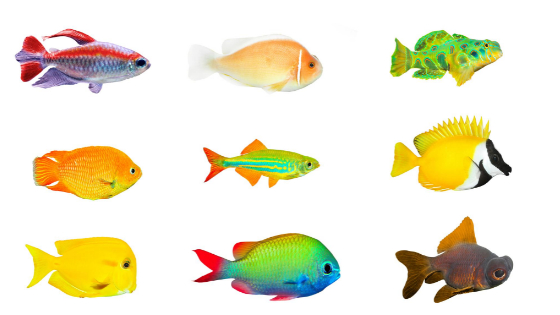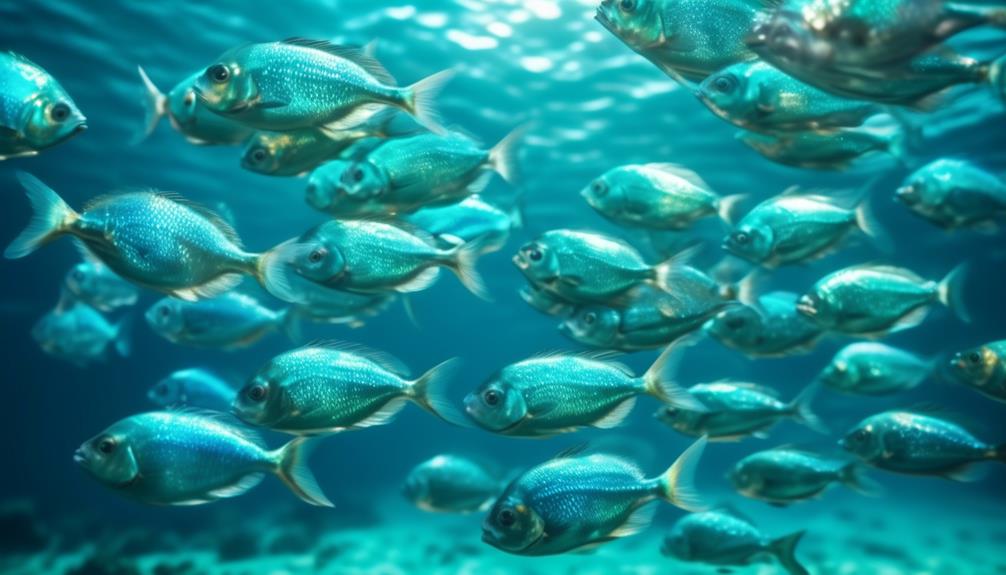
Welcome to the mesmerizing depths of the sea, where a diverse and captivating world of sea breams awaits you. Like a hidden treasure waiting to be discovered, these remarkable creatures hold secrets and wonders that will leave you spellbound.
From their peaceful nature to their unique habitat requirements, there is so much to uncover about these fascinating fish.
So, prepare to embark on a journey like no other, as we unravel the mysteries of sea breams and unveil the secrets that lie beneath the surface.
Are you ready to dive in?
Key Takeaways
- Sea breams thrive in temperate to tropical saltwater environments.
- They prefer slightly alkaline water with moderate hardness.
- It is important to maintain suitable water conditions and provide adequate swimming space in the aquarium.
- When selecting tank mates, choose non-aggressive species that prefer the same saltwater habitat and bottom region of the tank.
Fish Water Conditions
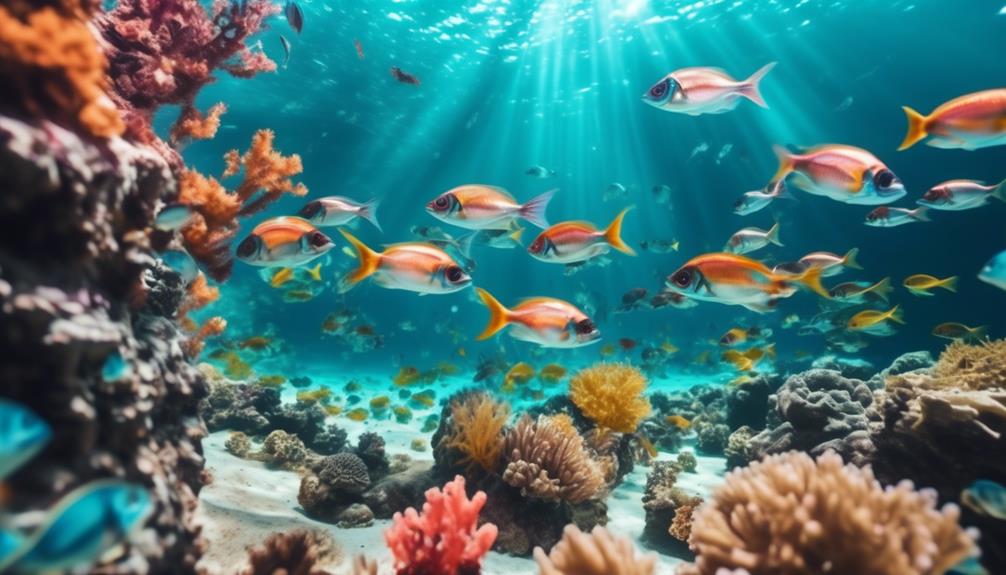
To ensure the health and well-being of sea breams, it’s important to provide them with specific water conditions.
Sea breams thrive in temperate to tropical saltwater environments. They prefer slightly alkaline water with moderate hardness.
It’s crucial to maintain water conditions suitable for community tanks and ensure that tank mates are non-aggressive and similar in size.
Sea breams tend to swim in the bottom region of the tank, so providing adequate space is essential to prevent territorial behavior.
These small to medium-sized fish can be kept in medium to large aquariums, but they need enough space to swim and thrive.
Understanding and maintaining the specific water conditions required by sea breams is key to their overall health and happiness.
Suitable Tank Mates
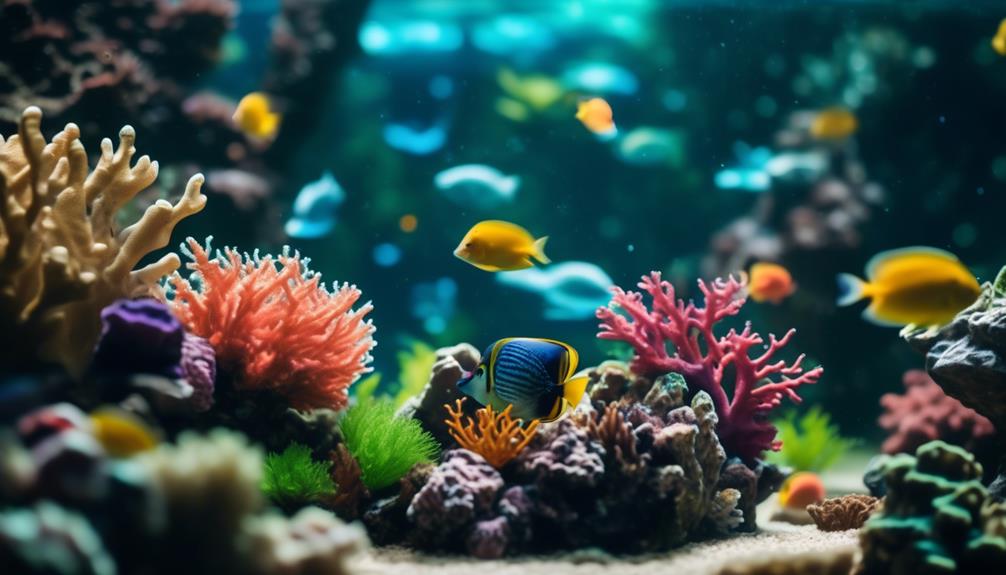
When considering tank mates for sea breams, it’s important to choose non-aggressive saltwater species that are similar in size and have a peaceful temperament. Sea breams thrive in the company of other fish that won’t pose a threat or cause unnecessary stress. Opt for species that share their temperate to tropical saltwater habitat and can coexist peacefully in the same tank.
Providing enough space is crucial to prevent territorial behavior, so ensure the tank is adequately sized. Look for fish that also prefer to swim in the bottom region of the tank, as sea breams tend to inhabit this area.
Size
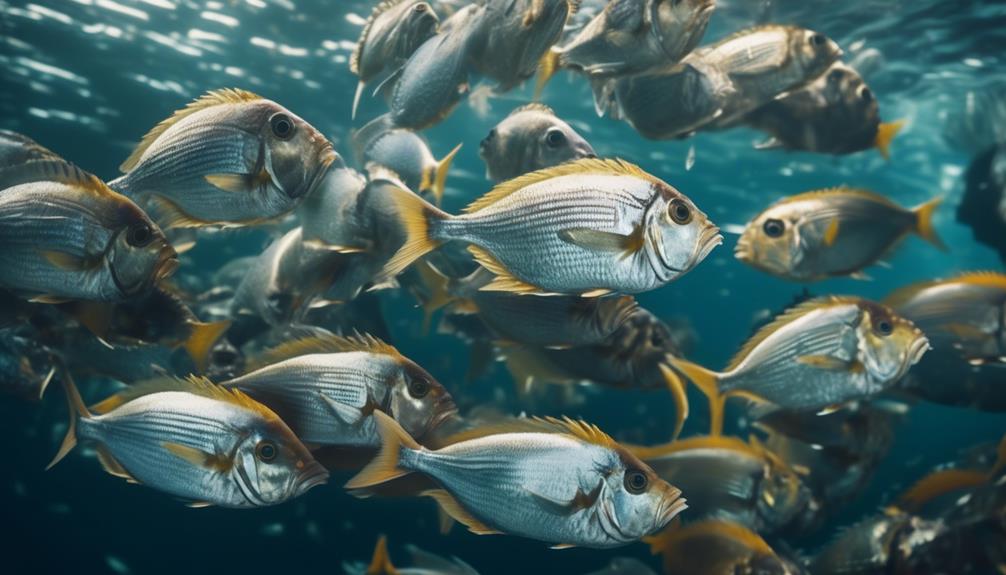
Sea breams come in a range of sizes, depending on the species within the Sparidae family. Below is a table that showcases the different sizes of some popular sea bream species:
| Species | Size Range |
|---|---|
| Red Sea Bream | 8-12 inches |
| White Sea Bream | 10-14 inches |
| Black Sea Bream | 6-10 inches |
| Gilthead Sea Bream | 12-16 inches |
| Yellowfin Sea Bream | 8-10 inches |
As you can see, sea breams vary in size, with some species growing as small as 6 inches and others reaching up to 16 inches in length. This means that when considering sea breams for your aquarium, you need to ensure you have a tank that provides enough space for them to swim and thrive. It is important to note that these sizes are just rough estimates and can vary depending on factors such as diet and environmental conditions.
General Description
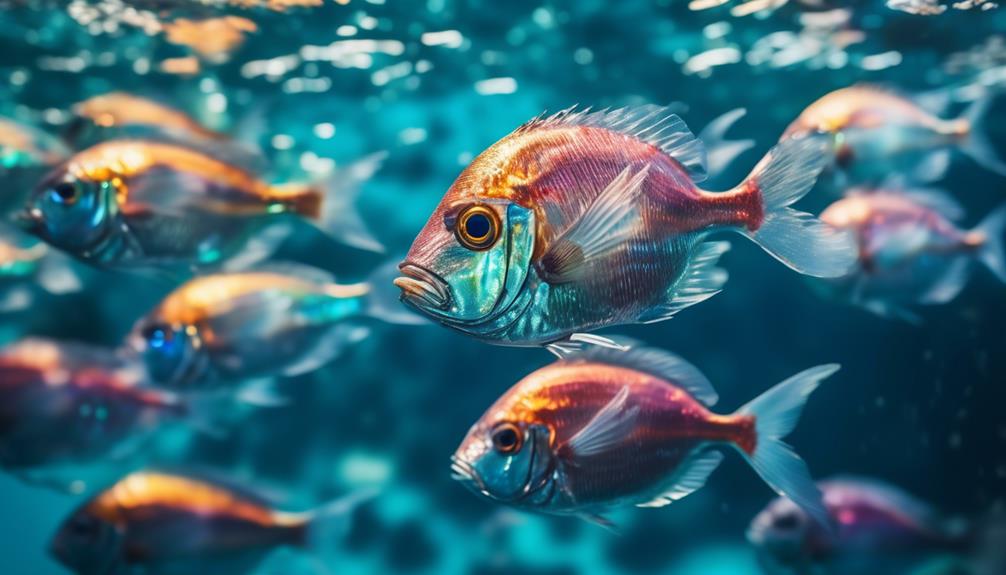
Sea breams, fascinating members of the Sparidae family, exhibit a wide range of sizes and temperaments, making them an intriguing addition to any aquarium. Here are three key points about their general description:
- Variety: The Sparidae family consists of over 155 species in 38 different genera, offering a diverse selection for aquarium enthusiasts. Each species has its own unique characteristics and behaviors.
- Habitat: Sea breams are typically found in tropical and temperate waters, and they prefer to inhabit the lower levels of the water column. This makes them a great addition to a community tank, as they won’t compete for space with other fish that prefer different water levels.
- Temperament: Different species of sea breams display varying temperaments. Some are more peaceful and can coexist with other non-aggressive saltwater species, while others may exhibit territorial behavior. It’s important to choose tank mates that have a similar size and peaceful temperament to ensure a harmonious aquarium environment.
Maintenance and Care

To properly care for sea breams in your aquarium, it’s important to maintain specific saltwater conditions and provide them with a suitable diet.
Sea breams require a saltwater habitat that isn’t suitable for reef fish, but they do appreciate the presence of live rock and sandy substrate.
It’s crucial to maintain a pH range between 8.1 and 8.4, as well as a hardness level between 8 and 12 dKH.
When it comes to their diet, sea breams are carnivorous and primarily feed on worms, crustaceans, and small fish.
It’s essential to provide them with a varied and balanced diet to ensure their optimal health and well-being.
Habitat Requirements
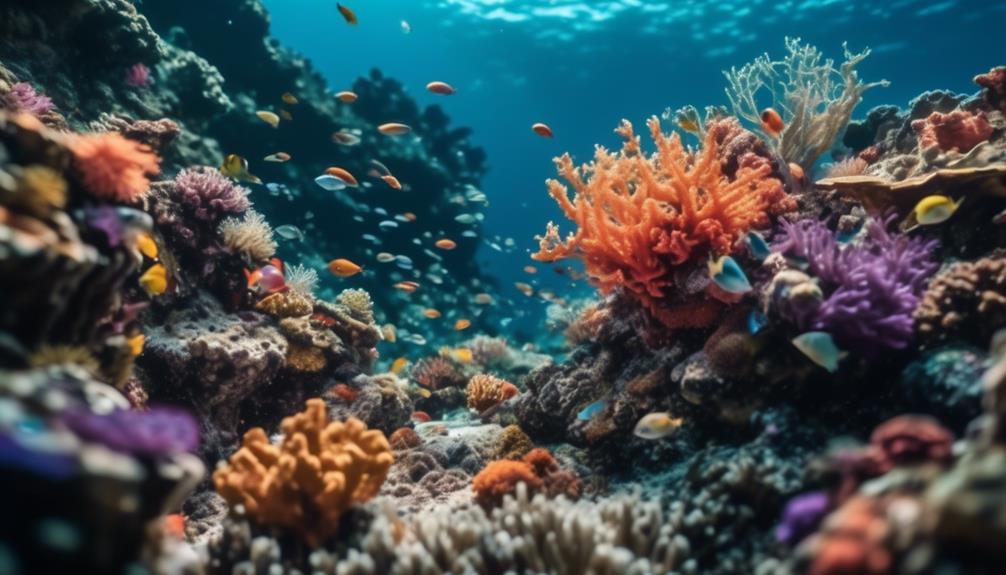
To properly create a suitable habitat for your sea breams in your aquarium, consider their specific requirements for optimal health and well-being. Here are three key factors to keep in mind:
- Water conditions: Sea breams thrive in temperate to tropical saltwater with slightly alkaline and moderately hard water. Ensure that the water is suitable for a community tank and maintain the right pH range between 8.1 and 8.4, with a hardness level of 8 to 12 dKH.
- Tank mates: Choose non-aggressive saltwater species that are similar in size and have a peaceful temperament. Sea breams can coexist with compatible tank mates, but make sure to provide enough space to prevent territorial behavior.
- Tank size: Sea breams are small to medium-sized fish, with varying sizes depending on the species. They can be kept in medium to large aquariums, but it’s crucial to provide enough space for them to swim and thrive.
Feeding Habits
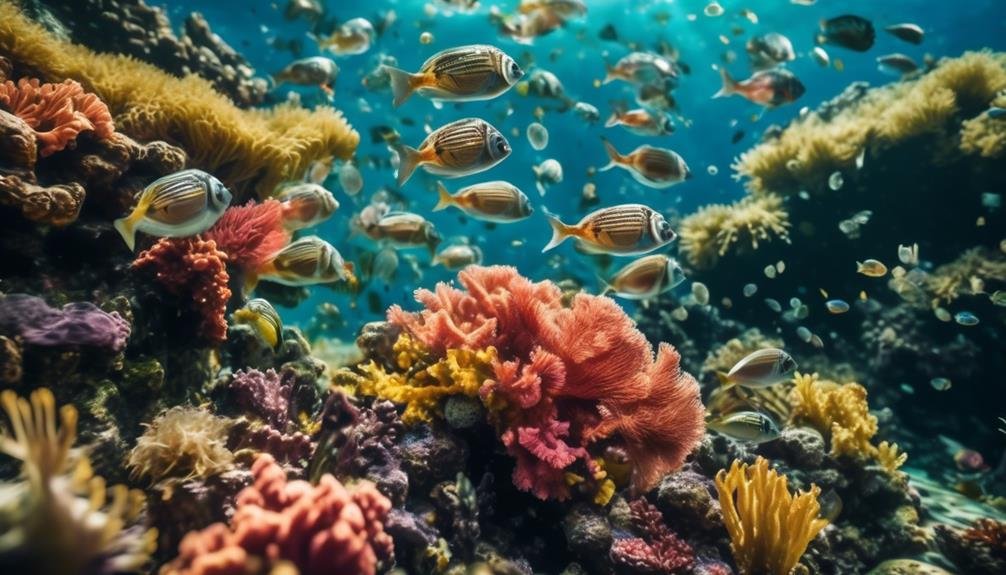
When considering the feeding habits of sea breams, it is important to take into account their carnivorous diet and preference for worms, crustaceans, and small fish. These fish have a voracious appetite and will eagerly consume these types of prey. To give you a better understanding of their feeding habits, here is a table outlining their preferences:
| Preferred Prey | Example |
|---|---|
| Worms | Bloodworms, bristleworms |
| Crustaceans | Shrimp, crab, lobster |
| Small Fish | Anchovies, sardines |
Frequently Asked Questions
How Many Species Are There in the Sparidae Family?
There are over 155 species in the Sparidae family. They can be found in tropical and temperate waters, and each species has its own unique temperament.
What Is the Average Lifespan of Sea Breams?
Sea breams have an average lifespan that varies depending on the species. They can live for several years in the right conditions, but it’s important to provide proper care and a suitable environment for them to thrive.
Can Sea Breams Be Kept in Freshwater Aquariums?
No, sea breams cannot be kept in freshwater aquariums. They require saltwater habitats with specific water conditions such as alkalinity and hardness. Keeping them in freshwater would not provide the suitable environment for their survival.
Do Sea Breams Require a Specific Water Flow Rate in Their Tank?
Sea breams do not require a specific water flow rate in their tank. As long as the water is well-circulated and oxygenated, they will be happy. They prefer a slightly alkaline and moderately hard water environment.
Are Sea Breams Known to Jump Out of the Aquarium?
Sea breams are not known to jump out of the aquarium. However, it’s important to provide a secure lid to prevent any accidental escapes. Ensuring a properly enclosed tank will keep your sea breams safe and secure.
What makes Sea Breams and Ray Fishes so Fascinating?
Sea breams and ray fishes are part of the fascinating world of ray fish, with their distinctive features and behaviors. Their unique body shapes and graceful movements in the water make them captivate marine enthusiasts. Their diverse species and roles in the ecosystem add to their allure, making them a subject of fascination for many.
Conclusion
In conclusion, sea breams are truly captivating creatures that require specific care and attention to thrive in a home aquarium.
From providing the right water conditions to ensuring they’ve enough space and suitable tank mates, creating the perfect environment for sea breams is essential.
By understanding their unique needs and feeding habits, you can enjoy the wonders of these mesmerizing fish and provide them with a healthy and fulfilling life.




